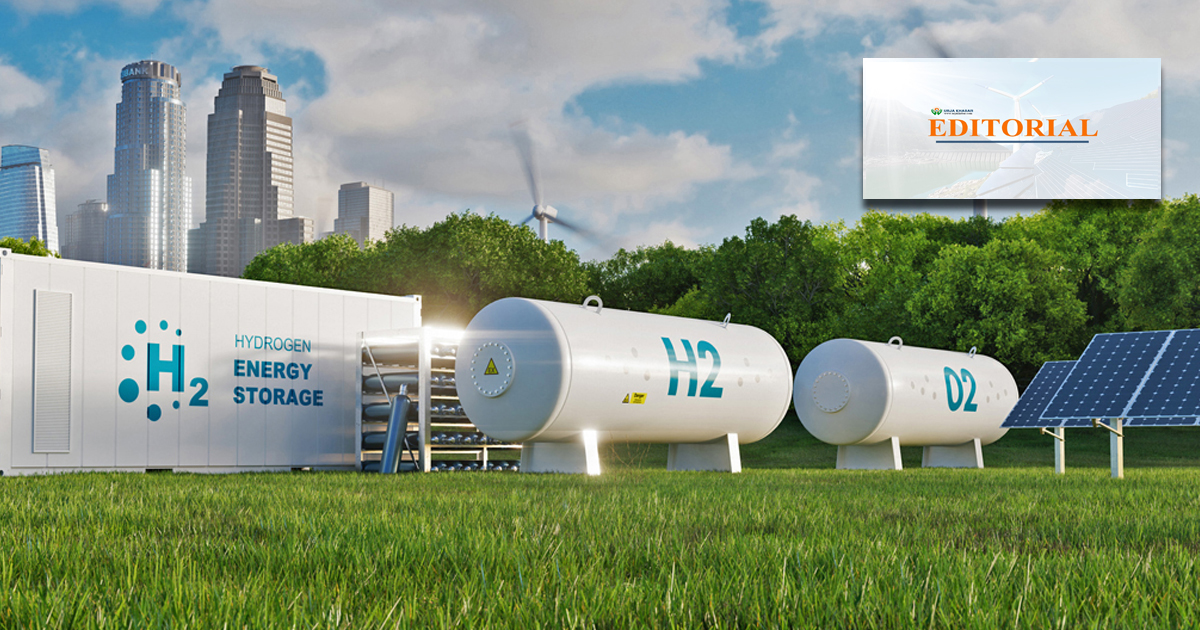Energy Update
Trade to India: Ethics or Electricity!

Kathmandu; A Delhi-based Indian distribution company named DRPL called for an international contract to submit a proposal to those interested in supplying 25 to 700 MW of electricity. On the basis of this proposal, the Nepal Electricity Authority (NEA) has joined the competitive process saying that it can supply 25 MW.
NEA itself cannot take part in the Indian competitive market as it has to go through the India-based company. NEA has been buying electricity from India through NTPC Electricity Trading Corporation (NVVN) Limited through the transmission line of Dhalkebar-Muzaffarpur. NEA has resorted to NVVN to participate in the competition to sell electricity there.

After sending a request letter asking to sell it to India, NEA sought permission from the Electricity Regulatory Commission (ERC). This is because the consent of the commission is required when generating and selling electricity inside or outside the country. At the same time, according to the NEA Act, if a country wants to sell electricity, it needs the permission of the government. NEA has already been given permission by the Cabinet.
The 98th meeting of the Board of Directors of the ERC held on Tuesday, 21st Poush, gave permission as per the demand of NEA. The commission has also stipulated that the surplus energy can be sold by guaranteeing the internal demand of Nepalese in a reliable and effective manner through the integrated power system.

Ever since the Mahakali Treaty was signed in 2052 BS, we have been dreaming of selling electricity in India. We are responsible before India for not being able to implement that for about 25 years. At a time when power is being wasted in the country, we are in a hurry.
Initially, only 25 MW was okay, which was allowed to be sold by the government and regulatory body. The ideological side towards Nepal has been finalized. Now, technically, how to export the electricity to the Indian market? This is a serious and endless question.
At first glance, the Dhalkebar-Muzaffarpur 400 KV cross-border transmission line is ready to trade electricity. It can carry 1000 to 1200 megawatts of electricity. The 400 KV Dhalkebar substation has also been made reliable by adding a 315 MVA transformer. Now when India is looking for suppliers up to 700 MW, why only request for 25 MW?
While searching for the answer to the last question, numerous and invisible technical complications appear simultaneously. First, Nepal has a fixed rate of buying electricity from India, but not of selling. Who will determine the selling cost? It also has countless sub-questions.
Nepal is simply saying, ‘we will export there at the same rate as we are importing from there.’ This kind of imaginary expression sounds very pleasant. But, is it possible? In any case, it seems impossible.
Now who will determine the selling price of our electricity? The Indian government or the electricity trading broker company or the provincial state? There is no short and quick answer to any of these questions. The answer to these imaginary questions can be anything. In reality, the price of our electricity depends upon how much India shows kindness to Nepal.
The agreement in principles for power trade between Nepal and India has been reached through the Power Trade Agreement (PTA) signed on 4th Kartik,2071 BS. But, India has always been diligent in its implementation so that Nepal’s electricity can enter its market without any hindrance.
Strong examples of this are the 2016’s discriminatory cross boarder Electricity Trade Directory and the Dhalkebar-Muzaffarpur Transmission Line. Before this line was built, we rented it for 25 years, with an annual fee of Rs.1.08 billion. From here we envisioned exporting up to 1200 MW of electricity but did not enter into a written agreement.
Why didn’t we seek India’s Signature at that time that we should be able to export up to 1200MW of electricity on the condition that he has to pay a wheeling charge of Rs.1.08 billion a year as rent for the transmission line? Due to this misconduct, we lost in policy level. That is why today India is arguing that no more than 600 MW of electricity can be transferred from this line.
We are imagining to reach the Indian market, even beyond that, to sell electricity to Bangladesh. There have been some paper signatures in front of these self-concepts. Just with this preparation, can we export our electricity or the amount of electricity that is wasted in monsoon? Again, India is still standing in front of this question.
India may have his own domestic policy about how to develop, and how much and at what price the electricity will be imported from abroad. Whatever India has done, we do not seem to have done even 5 percent of the work in our preparation. When we reach to the state of exporting electricity, there is no clarity regarding the rate and the maximum limit of flexibility.
At what rate does India import electricity from Bhutan in different months? There is no study either on the rate at which India is exporting to Bangladesh or the import and export rate of electricity among South Asian Countries. At least if we could study it, we would have a level of preparation. And, it would be easier to negotiate with India by comparing it with the domestic market rate.
There are three types of electricity trade with India. For example, NEA has been saying ‘day ahead’ and ‘term ahead’ market. Suppose India needs electricity for a day, it can be sold by booking from a computer system 24 hours in advance.
The NEA argues that this arrangement would be appropriate in a country like ours where electricity is wasted at monsoon and at night. However, this practice has not taken place between Nepal and India. We do not have such technology and infrastructure. The next, ‘term ahead’ refers to the power trade done by signing an agreement for a fixed period of time, day or month.
In another type, power trade is done through long-term Power Purchase Agreement (PPA). NEA is currently importing electricity from India under the same arrangement. Though other long-term plans have been discussed, nothing has been done. NEA is working accordingly to solve the short-term problems.
Today, the price of electricity in the Indian retail market has dropped to 1.90 IC per unit. Due to our high cost of hydropower, our competitive base in India is weak. When we have to enter the Indian market, we do not have any preparations regarding the rate.
First of all, we have to intervene to expand the internal market. Here, it is necessary to prepare confidently to trade at the maximum limit within the country, to export only if not possible. When exporting, we should look at the import-export market of the regional countries. An in-depth study of winter, monsoon or hourly rate is essential, and that study needs to be updated from time to time.
With this much preparation, at least in the negotiations with India on power trade, we can build a moral basis for our views. This is the most important and challenging task that the government and NEA have to do today. If we are to dream of trading power in an unprepared and unconscious way, we have to sell it at the mercy of India, far below our cost price.
When will we be able to rise above the culture and system of being the object of mercy before India? We will not be selling electricity if we are to enjoy diplomacy seeking mercy. In the name of electricity, our country’s morality will always be at stake in India’s gambling den.
Conversation
- Info. Dept. Reg. No. : 254/073/74
- Telephone : +977-1-5321303
- Email : [email protected]













